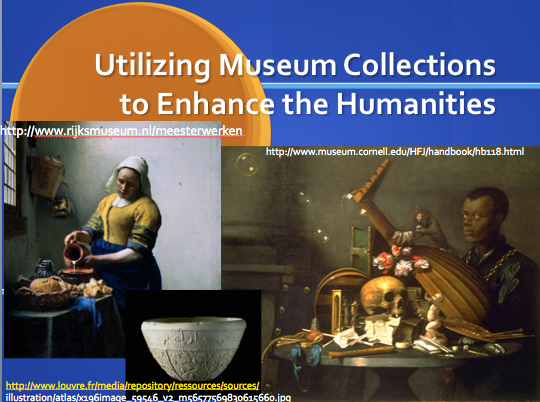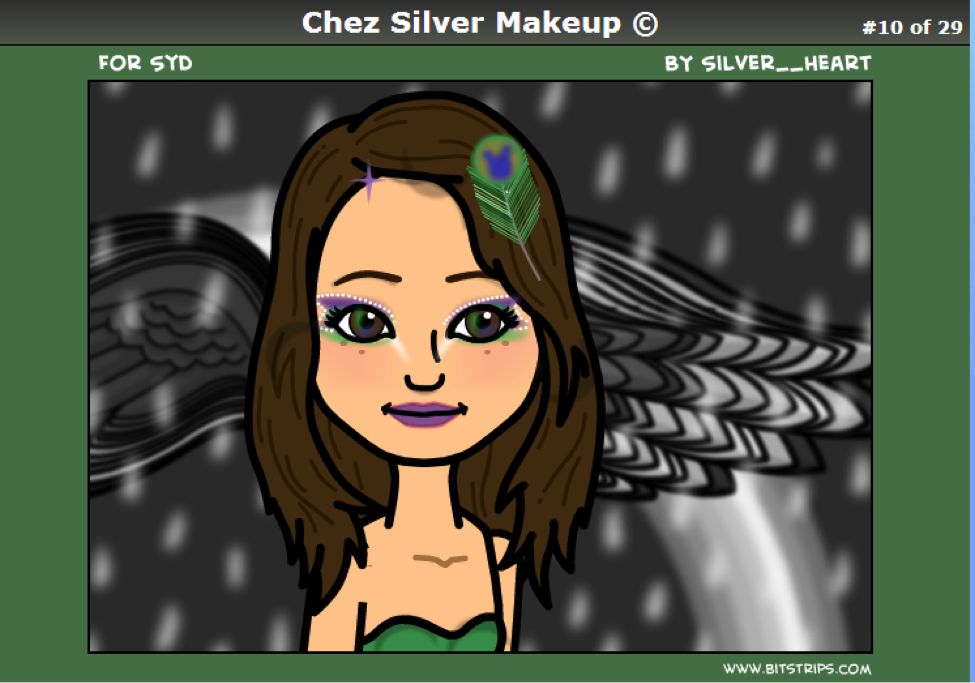by Eileen Bach, English Teacher
Concordia International School Shanghai
The ideal situation is to take students to museums, preferably those that maintain or recreate the original context. But, if you cannot go to the mountain, then there are ways to bring the mountain to you!
 Multiple types of lessons may incorporate images from, or virtual tours of, museums to support interdisciplinary course work. Both major museums with online collections, such as The British Museum in London, and lesser-known institutions, such as New York’s Fenimore Museum of American Folk Art, Oxford’s Pitt Rivers Museum of Anthropology & Archaeology, and The Morgan Library, offer many of their stellar collections online. These online collections may be brought to life vividly right in your classroom. What follows is a sample of lessons ranging from teaching a particular art form, such as Vanitas Paintings, to illustrating ideas by using images and recordings from museum archives.
Multiple types of lessons may incorporate images from, or virtual tours of, museums to support interdisciplinary course work. Both major museums with online collections, such as The British Museum in London, and lesser-known institutions, such as New York’s Fenimore Museum of American Folk Art, Oxford’s Pitt Rivers Museum of Anthropology & Archaeology, and The Morgan Library, offer many of their stellar collections online. These online collections may be brought to life vividly right in your classroom. What follows is a sample of lessons ranging from teaching a particular art form, such as Vanitas Paintings, to illustrating ideas by using images and recordings from museum archives.
TYPE: Using museum images to illustrate ideas
Example: Sutton Hoo treasures, supporting a unit about the English epic, Beowulf
Museum: The British Museum
URL: http://www.britishmuseum.org/explore/highlights.aspx
Images used to showcase Anglo-Saxon culture “…love of beauty, joy in creation, perfection in craftsmanship [flourished] in the Dark Ages” (R. Bruce-Mitford)
Assignment: Pseudo-archaeology
Enrichment: Poem “Junk”
TYPE: Using museum images to teach a particular form
Example: Vanitas paintings, supporting a unit on visual literacy (Advanced Placement English)
Museum: Johnson Art Museum
URL: http://www.museum.cornell.edu/HFJ/handbook/hb118.html
Image used separately following instruction from http://www.artisanart.us/lubin.html
Followed by text from the Johnson Museum site.
Assignment: Apply understanding to new image.
Enrichment: Create your own vanitas still life
TYPE: Using museum images to enrich a unit
Example: “Bound for Freedom’s Light: African Americans and the Civil War”
Museum: The National Portrait Gallery, Washington, DC
http://www.npg.si.edu/exhibit/exhbound.html
Assignment: Telling a story through vintage photographs
Enrichment: Walt Whitman’s Civil War era notebooks, available through the Library of Congress at:
http://memory.loc.gov/ammem/collections/whitman/wwntbks.html
TYPE: Using museum images as a “hook” to interest students in a topic.
Example: The Puritan
Museum: The Metropolitan Museum of Art
Assignment: How can you identify this man as a Puritan? What conveys this?
Enrichment: Poem “Upon the Burning of Our House”
TYPE: A Virtual Tour to set students in a particular time and place
Example ONE: Virtual tour of Dickens’s house in London
Museum: The Dickens Museum
URL: http://dickensmuseum.com/vtour/
Assignment: What elements make this home Victorian?
Enrichment: “A Child’s Christmas in
Wales” (post-Victorian writing but Victorian in sentiment and setting)
Example Two: The Peabody Essex Museum
URL:http://www.pem.org/visit/yin_yu_tang.php
Assignment: What elements characterize Chinese homes?
Enrichment: Architectural symbolism in Chinese homes, e.g. the vase as a symbol of peace
TYPE: Using museum archives (both images and recordings) to bring history to life.
Example ONE: The Voting Machine
Museum: The Smithsonian
Assignment: Used as illustration to
accompany “The Declaration of Sentiments”
Enrichment: Compose your own Declaration of Independence
Example TWO: The Foundling Hospital Museum
URL: http://www.foundlingmuseum.org.uk/oralhistory.php
Assignment: Used with studies or stories linked to poverty (Nickel and Dimed, Grapes of Wrath)
Enrichment: Dorothea Lange’s Depression-era photographs
Example THREE: The Peabody Museum
URL: http://www.peabody.yale.edu/collections/hsi/hsi_whatami.html
Assignment: Which of these items might have been Victor Frankenstein’s? For what purpose?
Enrichment: What is Maxwell’s Top?
OTHER MUSEUMS OF INTEREST:
This is an eclectic list, based upon my personal experiences and prejudices! Please add to this list!
The Art Institute of Chicago
The Clark
http://www.clarkart.edu/museum/video-tours/
Fenimore Art Museum of American Folk Art
http://www.fenimoreartmuseum.org/fenimore/collections/american_folk_art
The Frick
http://www.frick.org/virtual/index.htm
The Louvre
http://www.louvre.fr/llv/musee
visite_virtuelle.jsp?bmLocale=en
The Morgan Library
http://www.themorgan.org/exhibitions/defaultExhibOnline.asp
The Pitt Rivers Museum of Anthropology and Archaeology, Oxford University
http://www.prm.ox.ac.uk/collections.html
Rijks Museum
http://www.rijksmuseum.nl/meesterwerken
Eugene and Clare Thaw Collection of American Indian Art
http://www.fenimoreartmuseum.org/files/fenimore/collections/thaw/exhibit1/
The Uffizi
Victoria and Albert Museum
http://www.vam.ac.uk/activ_events/do_online/films/index.html
And remember those noted in the sample lessons:
The British Museum:
http://www.britishmuseum.org/explore/
The Johnson Art Museum:
http://www.museum.cornell.edu/
The Library of Congress:
The Metropolitan Museum of Art:
http://www.metmuseum.org/works_of_art/collection_database/
The National Portrait Gallery:
The Peabody:
http://www.peabody.yale.edu/collections/hsi/hsi_whatami.html
The Peabody Essex Museum:
The Smithsonian:















